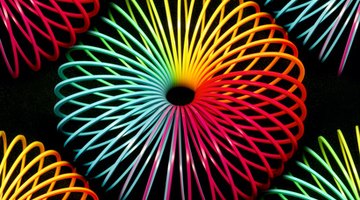You searched everywhere and finally found a brilliant piece of orange fabric. You start to work with the material and realise that it is a little too orange. Don't fret. There are two options to help tone down your orange fabric: overdyeing and combining complementary colours. Overdyeing is the process of dyeing another colour over the original colour. Depending on the length of time you allow the orange fabric to be dyed, the result will be a different shade of the orange or a completely new colour. Another technique to toning down orange fabric is by combining complementary colours which have the effect of muting the brightness of a vibrant orange.
- You searched everywhere and finally found a brilliant piece of orange fabric.
- Depending on the length of time you allow the orange fabric to be dyed, the result will be a different shade of the orange or a completely new colour.
Choose the shade or tone of orange you would like to achieve by overdyeing and use this as a guide to decide which fabric dye to purchase. On orange fabric, yellow dye creates a golden yellow colour; green dye creates a grey-brown colour; blue dye creates a grey colour; purple dye creates a brown; and red dye creates a tangerine colour.
Boil water in a large pot. The fabric should fit easily into the pot. The water must be sufficient to cover the fabric by an additional 2 inches. Empty the package of fabric dye and 1 cup of salt into the boiling water. Remove the pot from heat. Stir until the dye is dissolved and add the fabric.
- Choose the shade or tone of orange you would like to achieve by overdyeing and use this as a guide to decide which fabric dye to purchase.
- The fabric should fit easily into the pot.
Run a test by dyeing three small samples of your fabric and allowing each to sit for a different length of time. This will give you three samples of how the dye has toned down the orange colour of the fabric. Remember if you leave the fabric in the dye long enough, it will change colour completely.
Dip the fabric into the dye and let it soak for as long as your preferred results test ran to achieve the desired shade of orange. Stir occasionally. Remove the fabric and run under cold water until the water runs clear of dye. Hang the fabric to dry on a clothing rack.
- Run a test by dyeing three small samples of your fabric and allowing each to sit for a different length of time.
- Dip the fabric into the dye and let it soak for as long as your preferred results test ran to achieve the desired shade of orange.

Match the orange fabric to the shade of orange on the colour wheel.
Place a ruler from your shade of orange across the wheel to identify the colour and exact shade that is opposite on the wheel. This is the complementary colour of your orange fabric.
- Match the orange fabric to the shade of orange on the colour wheel.
- Place a ruler from your shade of orange across the wheel to identify the colour and exact shade that is opposite on the wheel.
Identify the colours on the wheel that sit on either side of orange. Depending on the colour wheel, these will generally be red and yellow.
Combine your orange fabric with one or two of these colours, starting with the complementary colour first. Adding additional colours will mute or tone down the brightness of the orange fabric and create a dramatic effect.
If you are working with orange fabric as upholstery for furniture, add throw pillows or a blanket in a complementary colour. If you are working with orange fabric for clothing then add a scarf to the outfit or perhaps a jacket.
